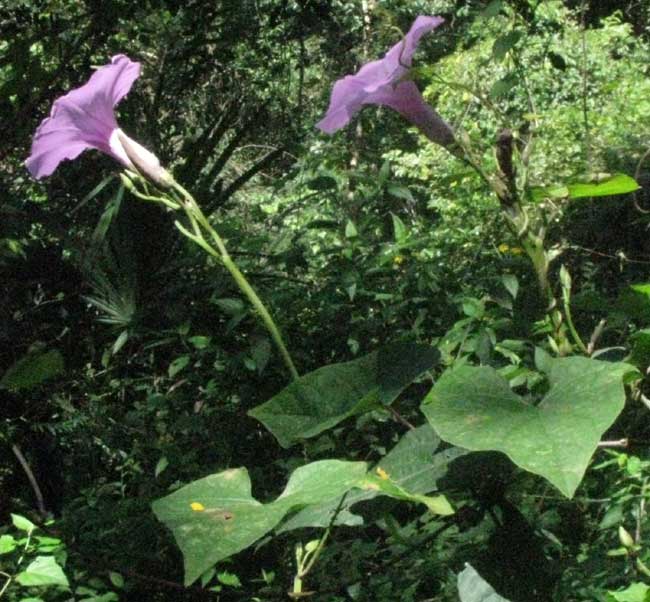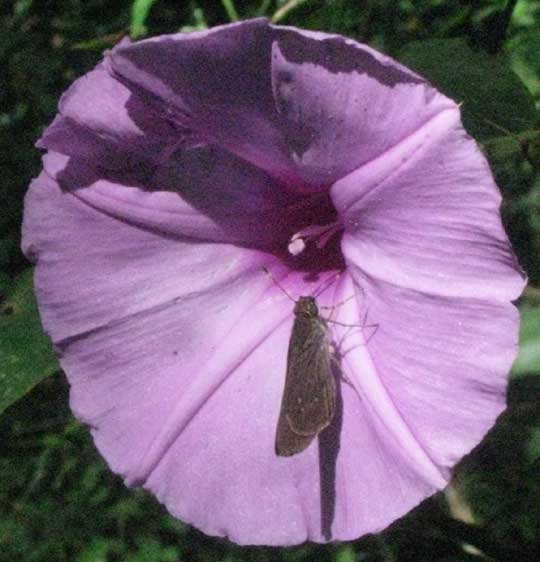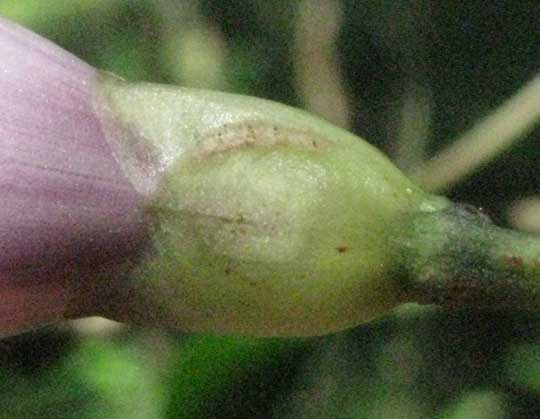Excerpts from Jim Conrad's
Naturalist Newsletter

from the December 18, 2011 Newsletter issued from Hacienda Chichen Resort beside Chichén Itzá Ruins; limestone bedrock; elevation ~39m (~128ft), N20.675°, W88.569°; central Yucatán state, MÉXICO
A DARK-EYED, VIOLACEOUS MORNING-GLORY
"Violaceous" is a nice word, meaning "of a violet hue." We have Violaceous Trogons here, for instance. Trying to make sense of all the morning-glory species here, lately I've progressed from lumping all the bluish-and purplish-flowered species together, to discriminating between those blossoms that are more sky-blue and others that are violaceous.
But even still we have quite a few violaceous-flowered species. Once I got that through my head, I began noticing that most flowers in that group had white throats, or "eyes," but a few had dark ones. Then I began noticing that the two most common dark-centered, violaceous blossoms had very different calyxes. At that point, I could start digging for names.
For example, along trails out in the woods often you see a species with blossoms raised high above its leaf level, its flowers stretching toward sunlight, as seen at the top of this page. You can see its dark center (and a basking skipper) below:

Its pale green, oval, broadly overlapping, thin-edged sepals, the outer ones shorter than the inner, are shown below:

All these features seem to narrow the species to this: IPOMEA TILIACEA, a species known to grow from southern Mexico and the Caribbean through Central America, and in Brazil.
We've already looked at the other violaceous species, at www.backyardnature.net/yucatan/ipomoea9.htm.
What's notable is that that other species, I. crinicalyx, is just about identical with I. tiliaceae, except for its calyx's long, green, fleshy "hairs."
So, why did Nature set two morning-glory species to flowering at the same time in pretty much the same habitat and locality, looking practically identical, except for great differences in the calyx? Even knowing how evolutionary history often explains such phenomena, I think of the answer in terms of Nature's pure gusto for engendering diversity.